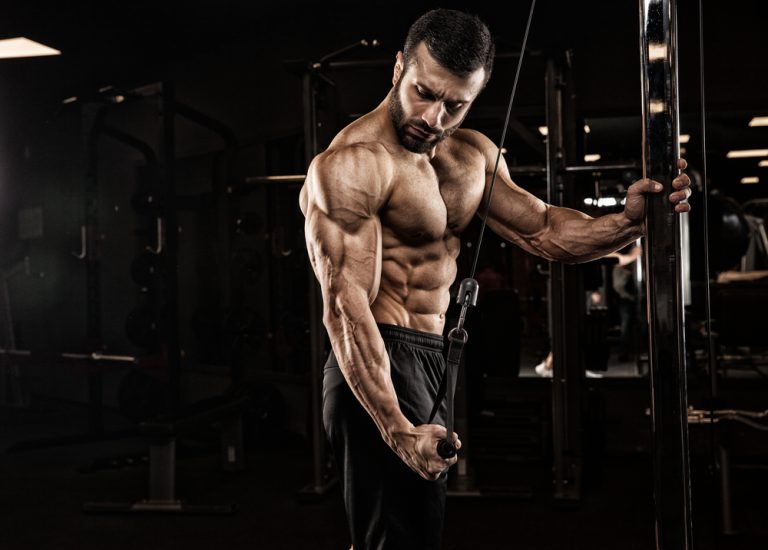Most folks just recognize the triceps as the muscles that extend the elbow, and while this is true, it overlooks a key part of their anatomy: the long head of the triceps crosses the shoulder to attach on the supraglenoid tubercale of the scapula. It assists the more powerful latissimus dorsi in extending the shoulder.
What's the ticket
In other words, to take the long head of the triceps through its full range of motion, you need full elbow flexion and shoulder flexion simultaneously. I don’t know how many of you do a lot of this throughout the day, but I certainly don’t.
Truth be told, I’m not convinced that it’s really just a tissue length issue. Sure when muscles hypertrophy (grow), they tend to do so in a shortened state.However, it’s rare that you’ll come across a lifter that can’t get their upper extremity into the position above, even though it requires great lat length and some thoracic spine mobility.
Moreover, I’ve seen a lot of pitchers present with posterior shoulder, triceps, and posterior elbow irritation when they had a ton of congenital laxity (loose joints) that allow them to get to this position extremely easily.
So what it gives?
The answer for me, at least is one of tissue density/soft tissue quality. In the past, I’ve called the elbow the most “claustrophic” joint in the body; though it’s a relatively small joint, there are actually more muscles/tendons crossing it than you see in the knee.
Add in ligamentous structures, nerves, blood supply, and fascia, and things can get really “gross” in there. In other words, lots of structures create friction against one another, particularly where the tendons attach to bones and transmit force.
You can easily palpate dense, nasty, fibrotic tissue at the medical epicondyle, lateral epicondyle, anterior elbow (biceps attachment point), and – most specific to the triceps – posterior elbow.
The problems don’t end there follow the long head of the triceps up the posterior shoulder and you’ll see that it comes together in a small area that involves the posterior rotator cuff, lat, teres major, posterior deltoid, and various ligamentous structures. It’s like a double whammy.
Imagine tissues that everyone wants to make bigger and use all the time (especially in the shortened position), yet they never get full stretched, and don’t really get any foam rolling love, either. That friends, is the triceps.
If you’re someone who has dealt with some annoying issues on this front, you’re in luck, as I’ve got a four-part plan to get you back on track.
Regardless of the chosen modality – an instrument-assisted version or just one’s hands – anyone who trains hard needs to get regular treatments with a qualified professional. Certainly, cleaning up triceps tissue quality is no exception.
You have to get a little creative to loosen up this tissue yourself, but it can be done with the help of the stick and a functional trainer. Simply set the tops of the machine’s arms up at chest height, and then work along the length of the muscle.
There are countless drills you can try to build some length in the long head of triceps (really anything with overhead reaching). That said, the bench t-spine mobilization is definitely my favourite because it gives a great triceps and lat stretch while building some thoracic spine extension mobility, anterior core stability, and deep neck flexor recruitment simultaneously.
Once we’ve established some range of motion (ROM), we need to solidify that improvement by establishing stability at adjacent joints. One thing you’ll usually see in folks with triceps issues is a big anterior pelvic tilt and lumbar lordosis.
The shortness of the long head of triceps goes hand-in-hand with the same issue with the lats, which pulls folks into a “gross extension” pattern. When they try to go into full shoulder flexion, they’ll substitute forward head posture and lumbar extension (lower back arching).
Everyone wants to move big weights and get big guns, but not everyone appreciates just how important arm care is in the big picture. Try these quick and easy strategies – your triceps, elbows, and shoulders will thank you.






